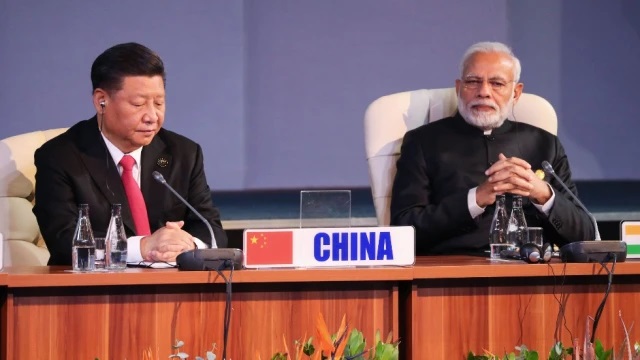The U.S. is a waning economic hegemon. But far too few Americans, including politicians, realize this. The eventual new and very big kid on the block is, under all but extreme scenarios, China and, after China, India. By 2100, the U.S. will be in third place, when ranked by GDP — producing only 12 percent of global output compared with China’s 27 percent and India’s 16 percent.
This is the message of a comprehensive new study by ourselves and co-authors. The study, just released by the National Bureau of Economic Research, separates the world’s countries into 17 regions and is carefully calibrated to the United Nations’s demographic projections as well as the International Monetary Fund’s fiscal data.
The two major forces determining a region’s economic future are its labor productivity growth and its demographics. Based on historical data, China’s and India’s labor productivity will, respectively, reach 30 percent and 13 percent of the U.S. level by 2050. In 2100, China will be as productive as the U.S. and India, 30 percent as productive. On the other hand, China’s population is slated to shrink by century’s end by 400 million people (i.e., by more than the current U.S. population). India, in contrast, is due to gain 400 million plus inhabitants. In 2100, its population will exceed China’s by 50 percent. Meanwhile, the U.S. population will grow by some 30 percent, adding roughly 120 million people (more than the current population of the Philippines).
These changes are massive and startling. But they are dwarfed by those coming in Africa and the Middle East. By century’s end, Sub-Saharan Africa will have 2.4 billion more people. This is close to adding the population of two current-day Chinas. The count of the Middle Easterners plus North Africans is scheduled to rise by almost 800 billion — nearly 2.5 times today’s U.S. population.
Other populations will shrink through 2100 — Japan’s by 40 percent, Western Europe’s by 10 percent, Russia’s by 14 percent and Easter Europe’s by 36 percent. Interestingly, whether region-specific populations rise or fall, all regions will experience dramatic population aging. Take China. Those aged 70 or older currently comprise 6 percent of the population. By 2100, they will constitute 26 percent. For Latin America, Central Asia and South Asia, projected aging is equally striking. Aging portends dramatic fiscal stresses, particularly paying pensions to the elderly. Several regions, including the U.S. and China, will need to dramatically raise their payroll tax rates, the sooner the better, to fund their retirees’ benefits.
Demographic changes – in population size and age distribution – matter greatly. But productivity growth is fundamental. In 2100, Sub-Saharan Africa will have 30 percent more people than China and India combined. But that region’s slow productivity growth means its share of world output will hardly budge — from 2 to 4 percent. What about automation? The West currently has more high-skilled workers to produce and use advanced technology. But, as shown in a companion study, automation must proceed far more rapidly for it to matter.
This vision of the future may seem inconceivable. But revisit 1945, when America’s economy comprised half of the world’s total. Back then, China’s share of global output was tiny. Today, the U.S. global-GDP share is just 16 percent, in rough parity with China’s. By century’s end, China’s economy will, as indicated, be more than twice the size of ours. As for Russia, its share of world output will dwindle to 1 percent, from 3 percent today.
Projections are driven by uncertain assumptions. Still, short of an immediate and permanent decline in Chinese productivity growth, the 21st century belongs to China. Given this, how will America react?
Most likely by falling into Thucydides’s trap — the tendency of wanning hegemons (Sparta in Greek historian Thucydides’s day) to pre-emptively confront rising powers (Athens) to retain dominance. Witness, in this regard, our new policies that limit China’s access to chips and commit us to defending Taiwan.
Attempting to rein in China economically and militarily will come at very high cost with unlikely success. Then again, Sparta did subdue Athens. Its secret was external help, from Persia. A coalition of the U.S., Europe, Japan, Southeast Asia and India could overwhelm the Chinese tiger. But doing so would require maintaining a tight alliance for decades — something that worked for Athens and Sparta during the Persian Wars but not thereafter.
In sum, the U.S. and China are trading economic places. But the process is putting our two nations on a likely path to war. This would do terrible, long-lasting damage to both economies, leaving others, like India, to pick up the pieces.

0 Comments